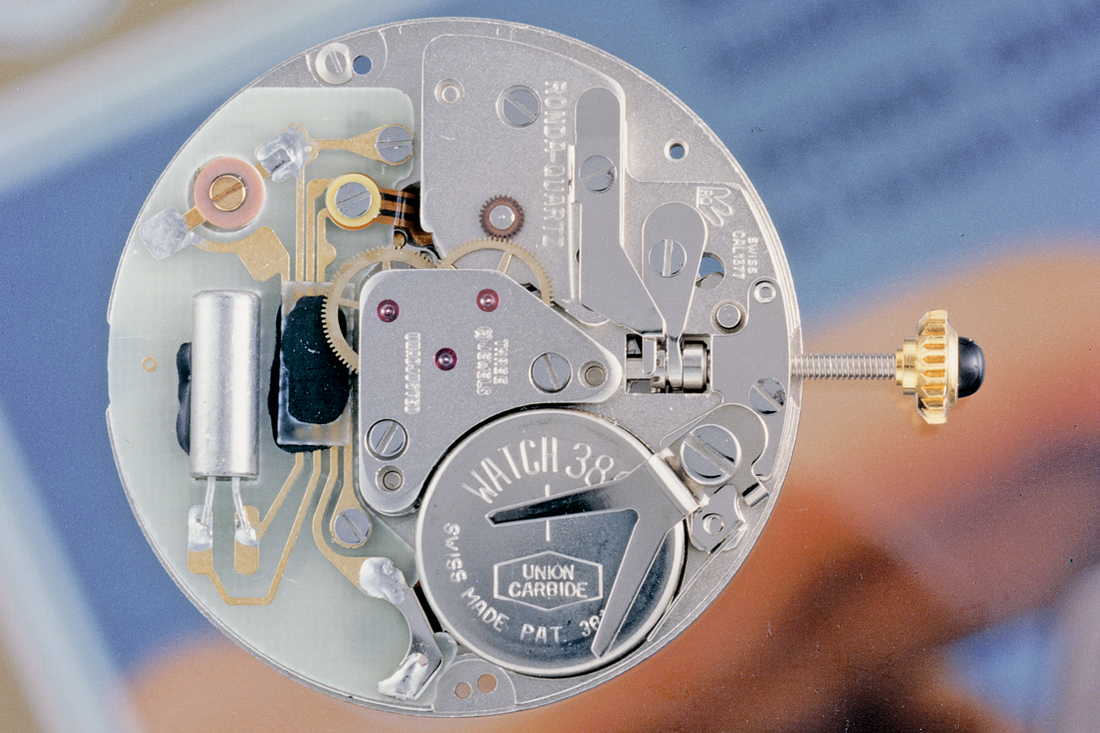First developed in the late 1970s, quartz watches are a relatively new phenomena in the centuries-old craft of watchmaking. Unlike watches with mechanical movements, quartz watches are a whole different breed.

Essentially, a quartz watch is battery powered. The watch uses a low-frequency, tiny piece of quartz crystal (silicon-dioxide) placed either like an integrated circuit and chemically etched into shape, or shaped like a tuning fork. That quartz crystal serves as the oscillator.
The battery sends electricity to the quartz crystal through an electronic circuit. The quartz oscillator vibrates quickly and with precise frequency (32,768 times/second) in response to the electronic charge. The circuit counts the vibrations and generates regular electric pulses of one per second. The pulses drive the small motor that spins the watch’s hands – offering accurate time measurement (until the battery slows and dies).

The first quartz watch put into production was the Astron by Seiko (1969) and, as a result, the Asian market swiftly cornered the watch business. However, in the early 1980s, Swatch Watch was unveiled and helped to recoup the Swiss watch business that had been ailing since quartz had been introduced due to the Swiss reluctance to embrace quartz technology. After Swatch, other Swiss brands embraced quartz technology, too, adding it to their repertoire of fine watchmaking.

